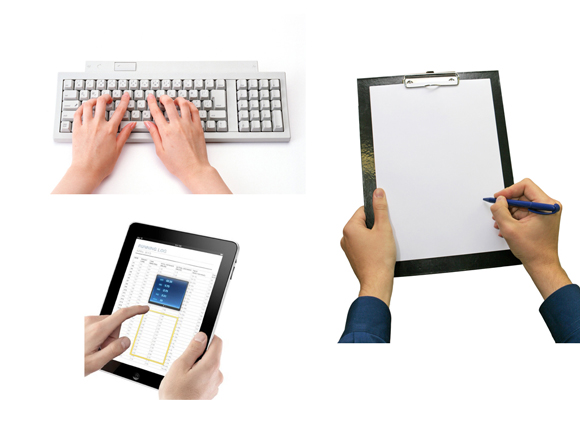Point and Share

Collaborative interactions using an interactive whiteboard lack the facility of eliciting participation from those in the room using traditional media. This project presents the design of a system called Point and Share that enhances participation in collocated meetings by allowing users to employ traditional media (pen and paper) to author content on a shared interactive whiteboard.
![]()
Team member: Gonglue Jiang
Date: Sep~Dec, 2011
Place: MIT Media Lab, Tangible Media Group
Special thanks to: Jinha Lee, Pranav Mistry and TMG Group TAs
![]()
Project Description:
Each participant can write on their own piece of paper and contribute to the content on the shared whiteboard.
Initial Idea:
The inspiration for Point and Share stems from our own experience during brainstorming sessions, in which we observed that it was usually one person in the group who consistently wrote on the whiteboard. All other participants either verbally communicated and waited for the writer to summarize their thoughts onto the whiteboard or scribbled in their notebooks to their thoughts with those in physical proximity to them. Through iterative design we designed a system to allow users to continue using their notebooks and share their ideas with everyone in the room by displaying their notes on the whiteboard.
I/O Methods for creative activities have been developed for many years. But the most efficient and accurate way for creative drawing is still the sketching with paper and pencil.

Features:
1. Interaction – Write first then share:
The user writes on the piece of paper. They then point to a spot on the whiteboard using their pen. What they write on the paper appears at the selected spot on the whiteboard.
2. Interaction – Write and share in real-time:
The user points to a spot on the whiteboard using their pen. What they write on the paper appears at the selected spot on the whiteboard in real-time.
3. Archiving:
The whiteboard content from the paper is digitally archived.

Implementation:
1. Room settings:

2. Hardware setup:

3. Processing coding:

Prototypes:



